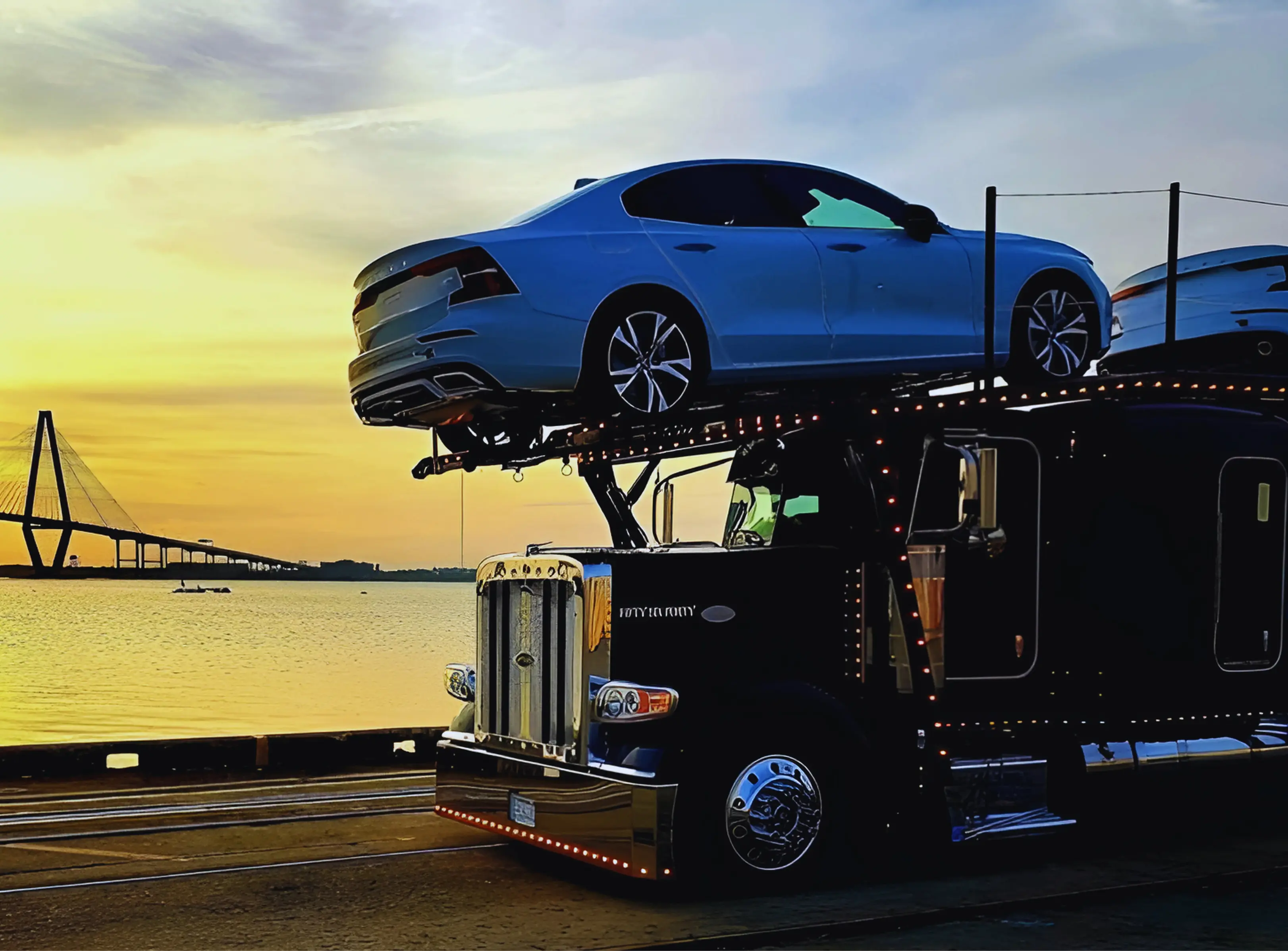What Are the Benefits of Flatbed Auto Transport?
When shipping your car, selecting the suitable method is important for safety and convenience. Flatbed auto transport ranks among the best, providing unparalleled versatility to haul anything from high-end luxury vehicles to heavy-duty oversized equipment. Unlike open car transport carriers, flatbed car transport services are the preferred option for cars that need special handling. However, what makes flatbed car transport stand out? Let's talk about the important advantages of the special shipping option.
What Is Flatbed Auto Transport?
Flatbed transport carriers is a specialized car shipping service that uses an open carrier with no roof or sides to transport cars that won't fit on common carriers. While open auto transport carriers are mainly for typical sedans and standard automobiles, flatbed auto transport carriers specialize in oversized trucks, modified vehicles, inoperable autos, and heavy equipment. This is a very effective method when shipping vehicles that are too big to ship on an open carrier or that cannot be driven onto a trailer.
Flatbed transport carriers offer a safe and convenient solution for cars that need additional space or special care. If you have to transport construction machinery, oversized commercial vans, or vintage cars with unique dimensions, flatbed carriers guarantee a secure and efficient transportation process. In contrast to enclosed auto transport carriers, which offer complete protection but are limited in space, flatbed car haulers offer the ideal combination of accessibility and security.

Key Benefits of Flatbed Auto Transport
Selecting flatbed car transport has a number of benefits, which is why it is a preferred choice for shipping all kinds of vehicles. Whether you're shipping a luxury vehicle, oversized truck, non-running car, or heavy equipment, flatbed car transport services offer the level of specialized care required for safe and effective delivery. Here's why this service is a standout:
1. Improved Safety and Security: In contrast to regular open auto transport carriers, flatbed transport guarantees that cars are given special attention. The secure strapping and lower vehicle load reduce risks in transit, making flatbed car transport suitable for high-value cars.
2. Flexibility for Special Cars: Flatbed car transport services can accommodate all sorts of vehicles, making it one of the preferred options for special transport needs owners. From relocating a classic vehicle, a modified truck, or a construction vehicle, flatbed shipping provides the adaptability needed.
3. Ease of Loading and Unloading: Because flatbed auto transport carriers lack side railings, loading and offloading is much simpler than in traditional methods of transportation. This is especially useful for non-running cars that need specialized offloading equipment.
4. Adaptability for Short and Long Distance Transport: Flatbed transport carriers are different from multi-car carriers that take precise shipping routes; flatbed carriers provide more straight routes, ensuring faster delivery and convenience.
5. Affordability for Specific Purposes: Although flatbed auto transport could be somewhat pricier than open transport, it could be more cost-effective for short-distance transports, expedited shipments, or cars needing extra care.
Who Should Choose Flatbed Auto Transport?
If you are not sure if flatbed auto transport is the best solution for your vehicle, look at the following situations. This type of transport is perfect for cars that need additional space, special handling, or cannot fit into open auto transport carriers.
Owners of Oversized or Heavy Vehicles: If you have a large SUV, lifted truck, or commercial van, for example, a Ford F-350 or Dodge Sprinter, standard carriers will not be able to transport your vehicle safely. Flatbed car transport services offer the room and weight capacity needed to transport oversized vehicles safely.
Transport for Non-Operational Vehicles: Not every car is running when it must be transported. Due to mechanical breakdown, accident, or restoration, non-running car transport is a specialized service. Flatbed transport carriers have the capacity to include winching services, where your car will be loaded and transported safely without needing to be operational.
Luxury, Classic, and Modified Car Owners: If moving luxury, exotic, customized, or antique vehicles, the priority is safety and special care. They tend to have low clearances, customization, or uncommon sizes that rule out regular transportation. Flatbed car transport carriers ensure safe, scratch-free service with no hazards of multi-vehicle transport.
Construction, Agricultural, or Industrial businesses: If your company needs to move construction equipment, tractors, forklifts, or other heavy machinery frequently, a flatbed auto carrier is the most suitable option. Flatbed auto carriers are used to transport oversized and oddly shaped industrial vehicles that would not be able to fit on standard carriers.
If any of these situations pertain to you, selecting a legitimate vehicle transport firm that specializes in flatbed car transport ensures your car arrives at its destination safely, securely, and in a timely manner.
How Flatbed Transport Compares to Other Methods
Comparing the different shipping options will help you pick the best for your car. Here are some ways that flatbed auto transport is different from other popular choices:
| Transport Method | Cost | Vehicle Protection | Best For | Capacity | Flexibility |
| Open Carrier | Most Affordable | Exposed to weather & road debris | Standard cars, daily drivers | High (Multiple vehicles) | Limited for oversized/non-running cars |
| Enclosed Carrier | Expensive | Fully enclosed, maximum protection | Luxury, exotic, or classic cars | Low (Limited space) | Not suitable for oversized vehicles |
| Flatbed Carrier | Mid-Range | Secure strapping, open-air | Oversized, modified, or non-running vehicles | Low (1-2 vehicles) | High flexibility for unique vehicle sizes |
Essential Tips for a Smooth Flatbed Auto Transport Experience
When reserving flatbed car shipping, it's best to make intelligent decisions to guarantee a hassle-free and smooth experience. Below are some key tips to guide you:
1. Check Carrier Credentials
Prior to choosing a flatbed auto hauler, verify its licensure and certification. Make sure the provider is registered with the FMCSA (Federal Motor Carrier Safety Administration) and has ample insurance coverage for your vehicle while in transit. A reputable vehicle shipping company will maintain open policies and easily produce proof of compliance.
2. Plan Ahead for Availability
Advanced booking is imperative because flatbed transport carriers use limited availability over open auto transport carriers. Location, season, and type of vehicle create demand variances, and advance planning ensures better pricing and scheduling accommodations.
3. Know Door to Door Auto Transport Options
Most car shipping companies provide door to door auto transport, i.e., your car is picked up and dropped at your designated locations. Nevertheless, certain places (e.g., congested roads or prohibited areas) may demand a meeting at a nearby accessible spot. Ask an auto transport expert about the door to door auto shipping cost and possibility.
4. Ready Your Vehicle for Transport
For smooth pickup and delivery, adopt the following preparation steps:
> Personal belongings: Items left behind can move during transport and are not insured.
> Leaks or mechanical problems: Carriers can refuse vehicles with major fluid leaks.
> Note the vehicle condition: Photograph from several angles prior to shipping to document any damage.
> Loose parts: Remove or secure tightly external components (e.g., spoilers, mirrors, antennas) to avoid damage.
By doing so, you can book confidently flatbed car transport that suits your requirements while keeping safety and security in mind for your vehicle.

Common Concerns About Flatbed Auto Transport
1. What types of vehicles can be transported using flatbed carriers?
Flatbed carriers accommodate oversized vehicles, non-running cars, luxury cars, and heavy equipment.
2. Is flatbed transport suitable for long distances?
Yes! While often used for short hauls, flatbed auto transport is also an excellent option for long-distance vehicle shipping.
3. How is my vehicle secured on the flatbed carrier?
Vehicles are strapped down using industry-grade tie-downs to prevent movement and ensure safe transit.
4. Can I transport multiple vehicles on a single flatbed carrier?
Flatbed carriers typically transport one or two vehicles at a time, prioritizing security and special handling.
5. Are flatbed carriers more expensive than other transport options?
Costs differ based on vehicle type, distance, and urgency. Flatbed transport is often cost-effective for specialty vehicles.
6. Can I choose an enclosed flatbed carrier for added protection?
Yes, you can opt for enclosed flatbed auto transport services for additional security.
7. How do I prepare my vehicle for flatbed transport?
Ensure the vehicle is operational (if possible), remove valuables, document its condition, and communicate special requirements with the carrier.
8. How long will it take to transport my vehicle using a flatbed carrier?
Shipping times depend on distance, weather, and route density. Flatbed auto haulers often offer quicker turnaround times compared to multi-car carriers.
Final Thoughts: Selecting the Best Auto Transport Company for Your Needs
Flatbed auto transport is an extremely versatile and safe mode of shipping specialty cars, providing flexibility and comfort. Whether shipping flatbed transport carriers for a heavy truck, an exotic vehicle, or machinery for construction, the mode provides the ideal solution for special transport requirements.
When selecting a trusted auto transport company, there should be a focus on service excellence, the experience of flatbed auto transport vehicle carriers, and readily available customer support. Rapid Auto Shipping is one of the most recognized and trusted companies in the industry, providing stress-free door to door auto transport that guarantees your vehicle's safe and prompt arrival at its destination. With a dedication to security and efficiency, we deliver a convenient experience, which is why we are the most preferred choice for individuals and businesses looking for reliable flatbed car transport solutions.
Require a trustworthy flatbed auto transport service? Call +1 (833) 233-4447 today for a free quote and professional advice on your vehicle shipping needs!

Feb 2025
"I recently used Rapid Auto Shipping, and I am beyond impressed with their service! From the moment I requested a quote to the final delivery, everything was smooth and hassle-free."

Some Of Our Recent Blogs

Car shipping insurance is a coverage that safeguards your car against damages that could take place during transportation.

Rapid Auto Shipping is a reliable and affordable way to ship your car from New York to Florida.

As we approach 2025, the auto shipping sector is being revolutionized by technological innovation.





